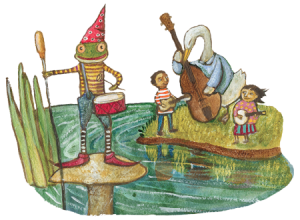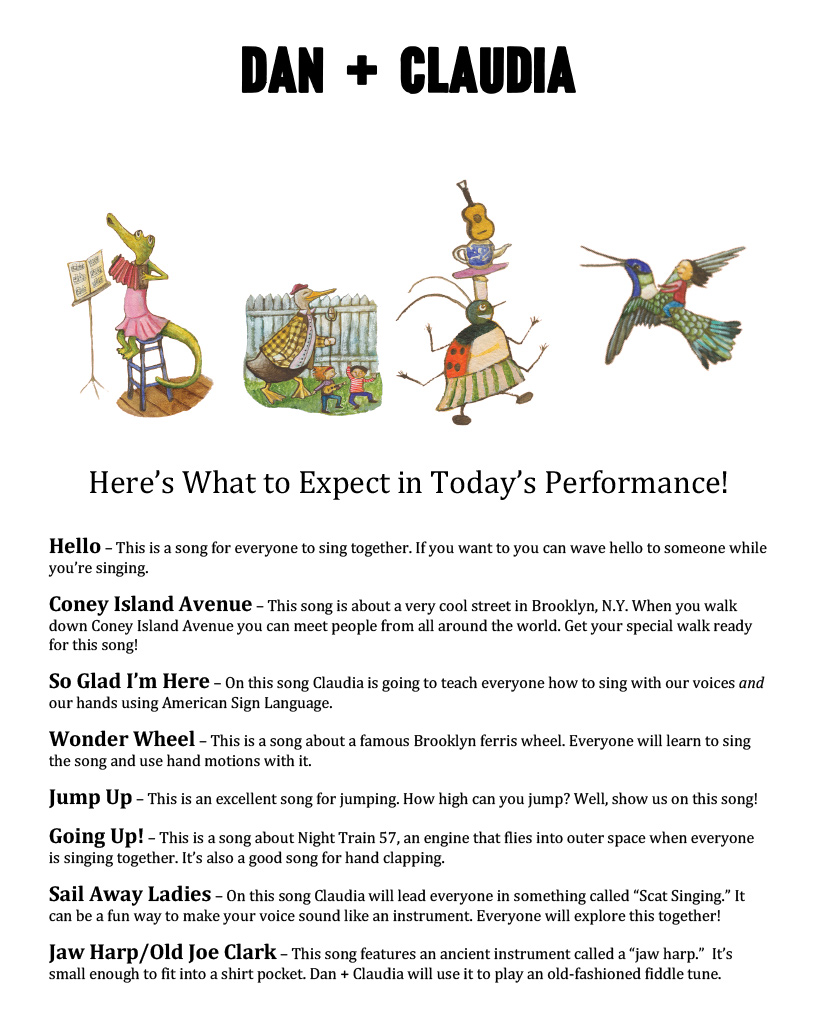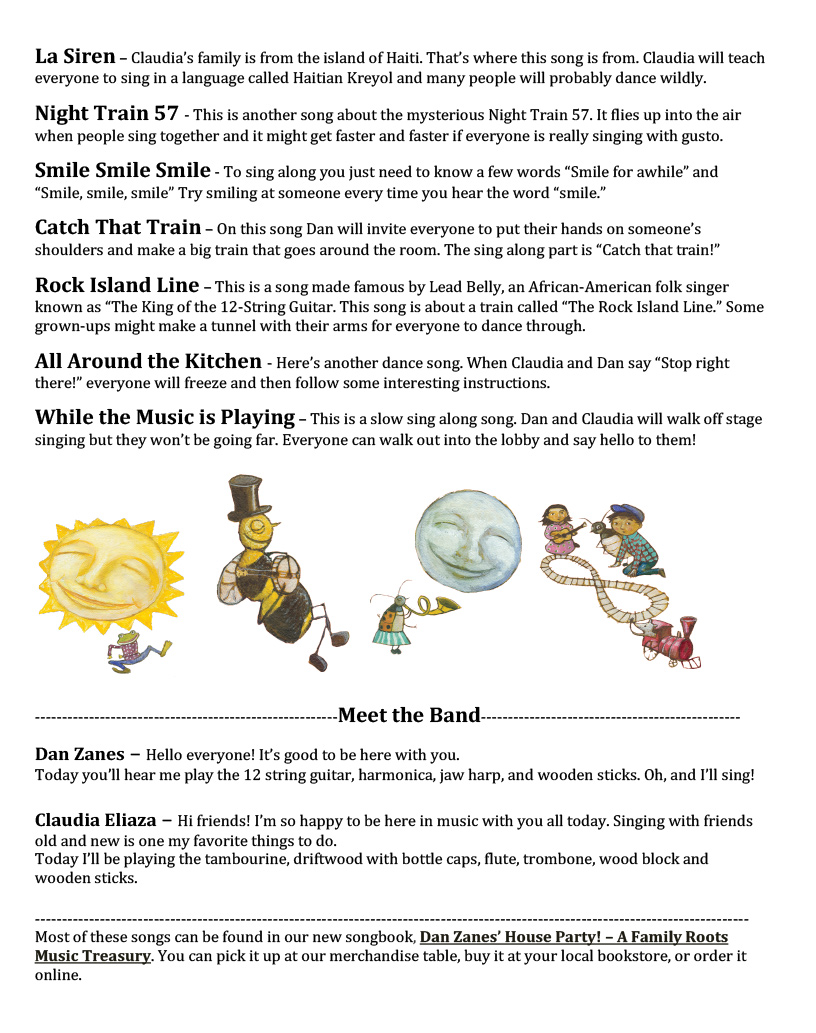Sensory Friendly
Since our very first Dan + Claudia Zanes concert at Chicago’s Old Town School of Folk Music in October 2016, we’ve been working with presenters to make our shows sensory friendly whenever possible (which has been most of the time).
When we talk about sensory friendly, or “relaxed” performances, we’re referring to conditions that make the concert experience comfortable for more people. It’s a way of opening the door wider and inviting a broader range of communities to the party.
These are still early days for sensory friendly and there are a variety of different ways of doing it. In certain cases, particularly theatrical performances, sensory friendly means a designated show that is specifically for people with autism. Some performing arts centers call these performances “relaxed” and invites anyone who wants a relaxed environment to experience the art.

However, when we say sensory friendly we’re indicating that all are welcome. Our goal is to create an environment that’s as inclusive and accessible to everyone. The audience that has always felt comfortable and welcome at our shows is invited as well as people with diverse sensory needs.
We’ve heard over and over from parents of children with disabilities that their child’s responses in public spaces can lead to uncomfortable situations in which they feel judged or unwelcomed. Sensory Friendly performances are a way of saying “come as you are, we’re all in this together.” We’ve seen firsthand how moving it can be when families who might not generally mix are able to enjoy music together. Once we experienced this there was no turning back!
What makes a show sensory friendly? A very basic guide.
1.Moderate Volume
This is something most family shows consider anyway. Many young people are disturbed by excessive volume at concerts. However, some like the big sounds. We try to avoid jarring musical and sound transitions from soft to loud to soft again within the composition of the music. We also recommend people to bring their own noise-cancelling headphones, should they need them.
2.Moderate Lighting
House lights between 25 – 40, the elimination of strobe lights and lighting focused on the audience are good ways to maintain a sensory friendly environment. Moderating the lights provides for visual orientation of space at all times.
3. A Designated Quiet Alternative Area
It can be very helpful to have a quiet chill-out space for kids who are feeling uncomfortable. If possible, beanbag chairs and a video monitor showing the action on stage are good for this area. Some presenters will use a quieter part of the balcony or main room if there’s not a separate space available.
4. A Visual Schedule
This can be as simple as an illustrated set list that lets families know what to expect next (see below). We have illustrations on hand and are happy to work with venues to create something special for each show. It can also be helpful to let families have access to resource materials to prepare for their visit, familiarizing them with both the artist and the venue. The opportunity to visit the venue beforehand is often appreciated.
5. Language to Indicate That ALL are Welcome
Creating a comfortable, friendly, non-judgmental space is one of the most important aspects of a sensory friendly performance. Families with children who have disabilities often feel as though their child’s behavior is being unfairly criticized. The purpose of a sensory friendly show is to create an atmosphere that is welcoming to one and all. It’s important to note that neurodiversity helps us all to develop a greater sense that people move through life in different ways. Some sensory friendly performances are called “relaxed” performances. Sensory friendly and relaxed performances use the same approach to invite and include everyone.
6. More Explicit Volunteer and Staff Training
This is often as simple as asking ushers and front of house personnel to be welcoming and to “relax the rules” that might usually apply although deeper training can be provided to help staff understand the various needs of a neurodiverse audience.
This is to let families know that there may be quieter segments of the performance and louder segments of the performance. During and Dan and Claudia Zanes show the increase in volume will be a result of more audience participation but the overall sound from the speakers will remain at a moderate level. This information will generally be written on the visual schedule. These are very general guidelines to help us begin a conversation about how we can make a Dan + Claudia Zanes show as inclusive as possible. A Sensory Friendly Show is a beautiful version of a win win situation. It ‘s really more like a win win win situation! Children with disabilities are explicitly welcomed and appreciated; families have an opportunity to make new connections and gain a greater understanding of their neighbors; and the venue has a chance to sell more tickets and help to elevate the community.








